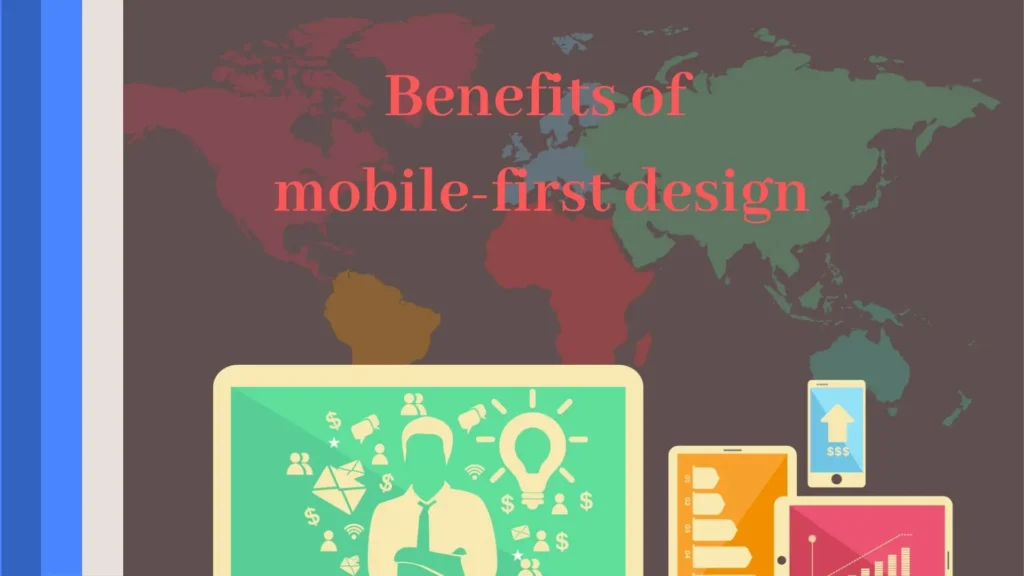In today’s digital world, where mobile devices dominate internet usage, designing websites that perform well on all screen sizes has become essential. Two of the most popular approaches used in web development today are Mobile-First Design and Responsive Design. Both aim to offer a great experience across devices, but their strategies and starting points differ. In this guide, we’ll explain both approaches in simple terms, explore their advantages, and help you decide which is right for your website.
- What is Mobile-First Design?
- Why Mobile-First Design Matters
- What is Responsive Design?
- How Responsive Design Works
- Difference between Mobile first Design and Responsive Design
- Benefits of mobile-first design
- Benefits of the Responsive Design
- The issue to Consider
- These are the Future Trends of Web Design
- Conclusion
- FAQ’s
What is Mobile-First Design?
Mobile-first designing contains a design practice that pertains to the most minimal device first. In such a method, designing would start with the smartphones and spread to the bigger devices such as the tablets and desktops. By doing this, it means that the most utilized characteristic and content is optimized to those who are using mobile thus it is really essential as far as most of the internet traffic nowadays is through mobiles.
Why Mobile-First Design Matters
- In the contemporary environment, the mobile-first design is instrumental because the usage of mobile internet is the biggest nowadays. People also purchase everything, read, book a meeting on the cell phones. It may be likely that users will be willing to walk away hurriedly when they discover that a site is non-functional on the mobile
- Benefits include:
- Quicker page loads on the phones
- Improved touch capability of display screens
- Better mobile-SEO (search engines prefer sites that are mobile optimized)

What is Responsive Design?
Responsive design is a flexible approach that adapts a website’s layout based on the screen size. Whether someone visits the site from a mobile phone, tablet, laptop, or desktop computer, the layout automatically adjusts to look good on that specific screen.
| Feature | Mobile-First Design | Responsive Design |
|---|---|---|
| Starting Point | Begins with mobile layout | Begins with desktop layout |
| Design Strategy | Progressive enhancement (small to large screens) | Graceful degradation (large to small screens) |
| Performance on Mobile | Optimized and faster | Can be slower if not optimized |
| User Experience (Mobile) | Prioritized and streamlined | Adapted from desktop; sometimes cluttered |
| Development Focus | Starts with essential features | Starts with full features, then removes for small |
| Content Priority | Core content shown first | All content shown; then hidden or resized |
| SEO Benefits | Strong SEO impact for mobile-first indexing | Good SEO, but may need more optimization |
| Complexity of Design | Simpler to start, scales with complexity | More complex from the beginning |
| Flexibility Across Devices | High, but may require additional styling for large | Very flexible across all devices automatically |
| Use Case | Best for mobile-focused audiences | Best for broad audiences with varied devices |
How Responsive Design Works
Responsive design doesn’t focus on a specific device. Instead, it aims to deliver a consistent experience across devices. It adjusts content layout and appearance dynamically as the user’s browser changes size.
Key techniques used in responsive design include:
- CSS media queries for changing styles based on screen width
- Flexible grids and layouts using percentages instead of fixed pixels
- Scalable images and font sizes
Difference between Mobile first Design and Responsive Design
It is no longer an option to make your site look good across all the devices in this digital world. The most trendy tools to do this are Mobile-First Design and Responsive Design. They are similar in that they both seek to give a decent user experience on varying sizes of screens but their approaches are different. So, let us look at the main differences with simple headings:
1. Starting Point
The Mobile-First Design starts with the smallest screen which is traditionally a smartphone. The background begins with simple designs and gets complex as the screen size becomes bigger. Conversely, Responsive Design begins with the layout of the desktop. The designers develop an elaborated version of the design that is used on the desktop, then it is simplified to fit on tablets and mobile phones.
2.Design Approach
Progressive enhancement is a technique used in mobile-first. It concentrates on fundamental functions of a mobile and provides additional functionalities of a bigger screen. Responsive design, however, applies what is known as graceful degradation, having the designers first establish a complicated desktop layout and then discarding or modifying features to fit smaller screens.
3.Casscade Media Queries
In the mobile-first approach, the developers are working with media queries of the pattern min-width, i.e. the styles are added in response to the enlargement of the screen. The responsive design, however, employs the max-width media queries where styles vary with a shorter screen size.
4. Performance
Mobile-first design is optimized towards smaller, less powerful devices and therefore, can lead to the faster loading and better performance of the page in smartphones. Responsive design may not be as mobile-optimized, and this is particularly the case when it begins with bulky desks-based content and it is compressed in a tighter screen.
5.Content strategy
Under mobile-first you are compelled to put first things first and this means what the users on the go are accorded first priority. This makes the design uncluttered and more specific. The process of the responsive design tends to copy desktop material and adapt it to mobile, which might result in a crammed or less concentrated mobile structure.
6. User Experience
Mobile-first prioritizes mobile users. Even the layout, the buttons and the navigation has been designed taken into consideration the small screen. This tends to give better phone user experience. Responsive design can provide the same experience on different kinds of devices, yet it still might not seem completely optimized on mobile, and a few changes are needed.
7.Development Complexity
Mobile-first design may take more planning in the beginning but can be easier to scale up. Responsive design may seem easier to start with if you’re already building for desktop, but it might requiThere are more mobile adaptations.
8. Best Use Case
The mobile-first approach is awesome when you are certain that the target users will mostly use smartphones. The case applies to e-com, blogging or social sites. The responsive design is perfect when your visitors are balanced between the desktop and tablets and smartphones, as it is the case with corporate and educational sites.
Benefits of mobile-first design
Better Mobile Experience: Design begins with mobile thus navigation and content arrangement is done so that it fits in small screens.

Improved SEO: Google utilises mobile-first indexing and therefore a well-optimised mobile site will rank higher.
Quicker Loading Speeds: Mobile first-websites are generally lighter and quicker.
Scalability: Basic mobile designs are simpler to expand on compared with reducing the complex desktop layout.
Benefits of the Responsive Design
Consistency: It performs the same design on all sizes of screen which gives uniform experience.
Time Saving: The developers only come up with a single version of the web site.
Easy Updates:The content is easy to update or the code easy to repair because there is only a single version.
SEO Advantages: Google gives reward to websites that are user-friendly and mobile-friendly.
The issue to Consider
- Target Audience: Analyse your traffic sources. When most of the users are smartphones, mobile first would be the best.
- Type of Content Simple content, i.e. text based content suits mobile-first. With more media-rich design like videos and animations, a responsible design may be helpfu.
- Development Budget: Mobile-first will be more time-consuming, but it could be more productive in the long run. Responsive might be faster to develop but might need more optimization in future.
- User Intent: Consider the behavior of your users. Do they read blogs or complete forms on the phone? Or they are touching up the advanced features which are less stressful on desktop?
These are the Future Trends of Web Design
Web designing is developing at a high rate. Serving mobile-first capabilities along with responsiveness, tools such as Progressive Web Apps (PWUs) ensure the mobile first and responsive behavior. AI-generated layouts, voice search and other advanced phone features are the features coming along and forcing developers to concentrate on speed, access and phone compatibility.
Conclusion
Mobile-First and Responsive Design are the excellent methods that can transform your site to be convenient and flexible. When a majority of the audience you have can access the internet via mobile appliances, mobile-first will present the audience with the finest experience. Responsive design is perfect when you want the same flexible consistent layout across all devices.
Ultimately, when deciding what would be the best format to use, it would all come down to your content, audience behavior and resources. Regardless of the approach that is chosen, the aim is not going to change: to ensure a cozy and pleasant experience of all visitors.
FAQ’s
SuchToolter as Figma, Bootstrap, Tailwind CSS, Chrome DevTools, Google Lighthouse are popular.
Yes, since Google employs the mobile-first indexing method, a site that is optimized on mobile has more chances to be ranked higher.
Yes. Lots of developers claim to be the mobile-first mindset and use responsive techniques to achieve flexibility.





